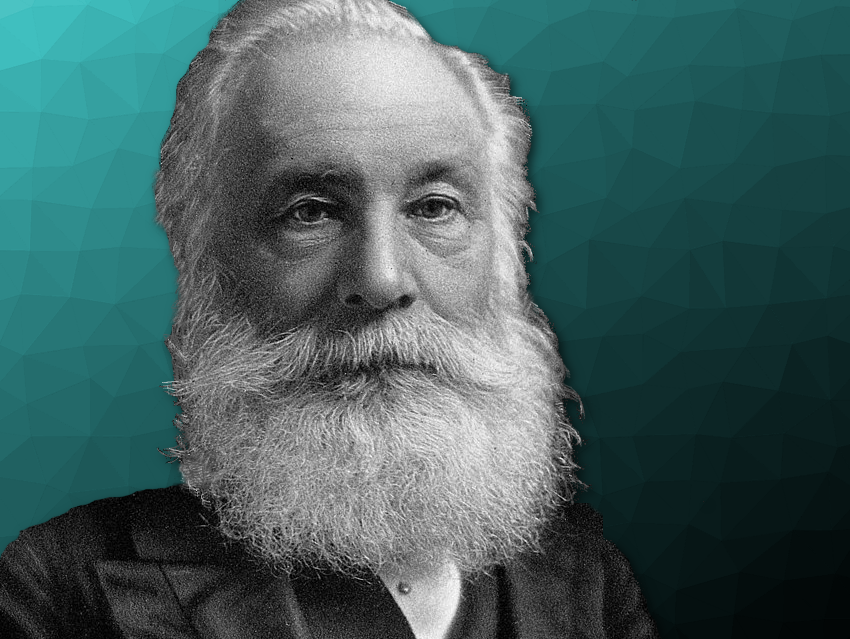William Henry Perkin was born in East End, London, UK, on March 12, 1838. He was the youngest son of a master-builder and constructor and as a boy, he constructed steam engines. In 1853, he was already a student at the Royal College of Chemistry, London, under the direction of August Wilhelm von Hofmann, and in 1854 Perkin became a titular assistant in Hofmann’s laboratory. Perkin investigated anthracene, the nitration and reduction of aromatic nitro compounds, and the effect of cyanogen chloride on naphthylamine. From the oxidation of anthracene, Perkin obtained anthraquinone. In 1854, Perkin set up part of his apartment as a laboratory so that he could work on his own investigations in addition to his duties for Hofmann.
Beginning of the Synthetic Dye Industry
In 1856, William Perkins’ daring attempt to produce quinine for the treatment of malaria by oxidation of aromatic amines went completely wrong. Although he did not obtain quinine, he did obtain the first synthetic textile dye, violet mauvein (Perkin violet, aniline purple) [1]. This marked the beginning of the tar dye industry and the chemical-pharmaceutical industry that developed from it [2,3].
Perkin patented his invention [4] and established a chemical factory in Greenford Green near Sudbury, UK. Mauvein was marketed under the names Aniline Purple and Tyrian Purple. At first, it was only used to dye silk, later also for cotton. Untill then the color purple had been a mark of aristocracy and prestige, as it was especially expensive and difficult to produce. Known as Tyrian purple, the dye was made from the glandular mucus of certain mollusks.
Perkin had set up a small laboratory near the factory building, where he continued his research. Soon, many new aniline dyes appeared; some were discovered by Perkin himself. Factories producing them were constructed across Europe. In 1869, Perkin filed a patent for the production of the brilliant red dye alizarin from anthraquinone disulfonic acid at the same time as Carl Graebe and Carl Liebermann working for BASF in Ludwigshafen, Germany. BASF patented the process one day before he did [5,6], but he had much more experience and developed a cheaper process.
To avoid legal disputes, Perkin and BASF founder Friedrich Engelhorn agreed on production for the then lucrative English market. In 1870, Perkins Factory was the first to produce alizarin. It produced 1 ton in 1869, 40 tons in 1870, and in 1871, production was already at 220 tons. It also marketed other dyes such as Britannia purple and Perkin green. In 1873, Perkin sold his factory and retired from business activities, and concentrated on research in the field of organic and physical chemistry [7]. He built himself a new house in Sadbury and turned the old, adjoining house into a laboratory
Perkin Reaction
Around 1867, William Henry developed the Perkin reaction for the production of α,β-unsaturated aromatic acids by aldol condensation of aldehydes with sodium salts of carboxylic acids under the influence of acid anhydrides. The alkali salt acts as a base catalyst, other bases can be used instead.

The simplest case, performed by Perkin in 1875, is the reaction of benzaldehyde and acetic anhydride. Cinnamic acid and acetic acid are synthesized. Cinnamic acid is an important component of cinnamon, along with cinnamic aldehyde and eugenol. Cinnamic acid became an important starting material for the first indigo synthesis.
In 1868, Perkin succeeded with the same reaction in producing the first synthetic coumarin, which was first marketed in 1876. Coumarin was the first major fragrance based on coal tar, and Fougère Royale was the first perfume based on a synthetic fragrance, launched in 1881.

Sir William Henry Perkin died on July 14, 1907, in Sudbury, UK. The Perkin Medal of the Society of Chemical Industry, of which he was the first recipient, and the Perkin Prize for Organic Chemistry are named after him. The journal Perkin Transactions, published from 1972 to 2002 by the Royal Society of Chemistry (RSC), is also named after him. His sons William Henry Perkin Jr., Frederick Mollwo Perkin, and Arthur George Perkin also became chemists; he also had four daughters [7].
References
[1] A W. H. Perkin and A. H. Church, XXIV.—On some derivatives of naphthylamine, J. Chem. Soc. 1863, 16, 207–216. https://doi.org/10.1039/JS8631600207
[2] Klaus Roth and Sabine Streller, From Pharmacy to the Pub — A Bark Conquers the World: Part 3, ChemViews Mag. 2013. https://doi.org/10.1002/chemv.201300078
[3] Karl Hübner, 150 Jahre Mauvein, Chem. Unserer Zeit 2006. https://doi.org/10.1002/ciuz.200690054
[4] William Henry Perkin, Patent No. 1984, August 26, 1856.
[5] Carl Graebe, Carl Liebermann, Patent No. 1936, June 25, 1869.
[6] William Henry Perkin, Patent No. 1948, June 26, 1869.
[7] R. Medola, Obituary William Henry Perkin, Chemische Berichte 1911, 44, 911–956. https://doi.org/10.1002/cber.191104401137
Also of Interest
- Chemistry Advent Calendar 2020
ChemistryViews 2020.
Daily highlights from the chemistry of spices - Cinnamon Chemistry
ChemistryViews 2020.
In this Clever Picture we look at the chemistry of one of the oldest spices




